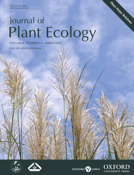-
PDF
- Split View
-
Views
-
Cite
Cite
Richard H. Waring, Jiquan Chen, Huilin Gao, Plant–water relations at multiple scales: integration from observations, modeling and remote sensing, Journal of Plant Ecology, Volume 4, Issue 1-2, March 2011, Pages 1–2, https://doi.org/10.1093/jpe/rtr006
Close - Share Icon Share
Water is a unique substance because there is no substitute for the support of life. With expanding demand of the world's growing population and economy, combined with climate change, attempts are underway to reduce water use from both managed and natural ecosystems. Currently, plant–water relations are assessed by field experiments and extrapolated through remote sensing and modeling techniques. The overarching challenge, thus, is to understand the basic interactions between plants and their environment well enough to predict responses regionally and globally, both now and in the future. The authors of this special issue share their insights to help bridge these gaps, and thereby speed the integration of plant–water relations to make more reliable and soundly based predictions at multiple spatial scales. This special issue contains nine papers that use a combination of observations, models, and remote sensing to interpret the role that plants as individuals, communities and components of the landscape play in the hydrologic cycle.
Asbjornsen and colleagues (pp. 3–22) provide a comprehensive review of the emerging field of ecohydrology that includes important advances in scaling water fluxes from leaves to landscapes, the role that deeply rooted vegetation plays in redistributing water to increase or decrease surface salt accumulations and interactions with the atmosphere that affect water storage, run-off and seepage.
In Denmark, Dalsgaard and colleagues (pp. 23–35) measured water flux through sapwood and found that trees adjacent to recent gaps in the forest canopy access more water during periods of drought than do more evenly spaced individuals. Ni-Meister and Gao (pp. 34–47) integrate a simple clumped canopy radiative transfer scheme with a macroscale hydrological model to assess and predict the large differences observed in the accumulation and melting of snowpack under a range of boreal forest types in Canadian boreal forests.
In Mongolia, Lu and colleagues (pp. 49–60) use eddy-flux covariance analyses to contrast the ratio of evapotranspiration (ET) to annual precipitation in six types of vegetation, including crops, grazed and ungrazed grasslands, shrub lands and plantations of poplars. They note the importance of groundwater extraction in arid climates where deeply rooted plants may transpire at rates exceeding annual precipitation. Zhan and colleagues (pp. 61–66) go on to show, through modeling, that land use changes can be as important as climatic variation in affecting run-off into the major reservoir for supplying drinking water to 16 million people in Beijing, China.
Conner and colleagues (pp. 67–76) focus on the role that variation in the depth to the water table plays in affecting productivity along a moisture gradient in the coastal zone of South Carolina, USA. Primary production and gross photosynthesis, we recognize, are both linear surrogates for ET at monthly and annual intervals. Wang and colleagues (pp. 77–90) combine the monitoring of groundwater levels and salinity with remote sensing index of canopy greenness to the vegetation responses to groundwater fluctuations over the last decade on the arid, lower Heihe River Basin in China. Li and colleagues (pp. 91–99) note major shifts in seasonal temperature and precipitation patterns over the Amazon Basin in response to El Nino years with origins in the eastern versus the central Pacific Ocean. Through use of an ecosystem model they find implications of this climatic variation on productivity and net ecosystem exchange of carbon from Amazonian forests.
Finally, Waring and Landsberg (pp.101–103) recognize an important link between photosynthetic capacity and maximum leaf stomata conductance in their landscape-level review that can be used to classify vegetation via spectral analyses acquired from remote sensing platforms. This capability, combined with remotely sensed structural details of canopy architecture, offers a means to improve the accuracy in modeling water vapor exchange from heterogeneous landscapes.
There are clear challenges to the scientific community embedded in this set of papers. Among the most obvious is that conditions are rapidly changing, and to predict the responses of vegetation to these changes will require more synthesis of effort and more reliance on modeling and remote sensing in developing process-based predictions of future conditions.




